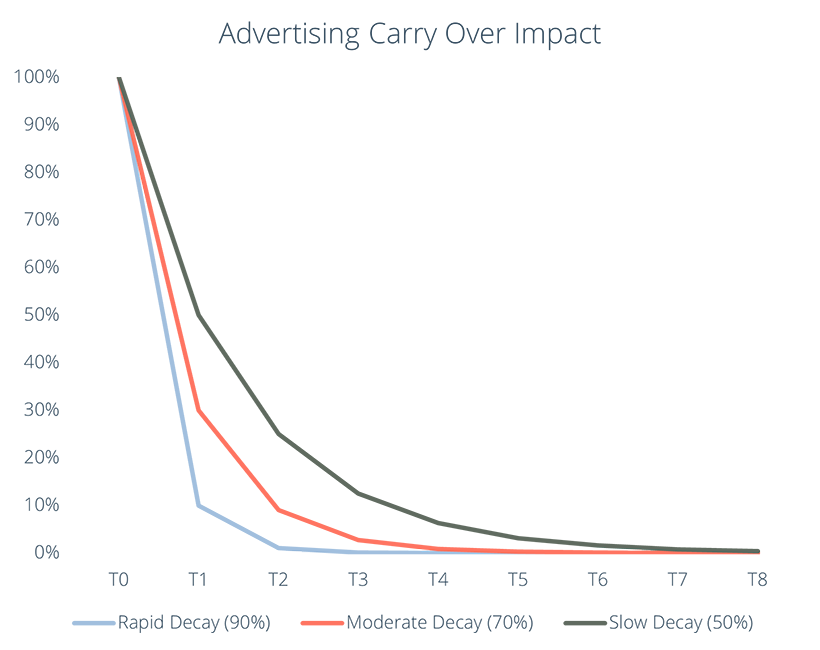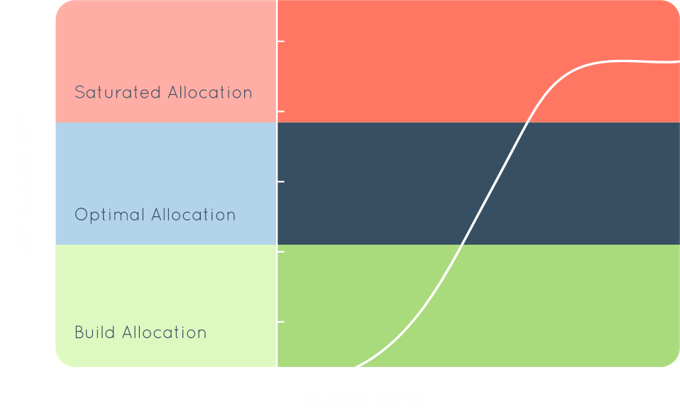In measuring impact of advertising channel, it is critical to account for the dynamics of the relationship of media to response, including time to action and the risk of over-exposure. Decay and Saturation are two primary components of any Marketing Mix Model, helping isolate the quantitative shape of those relationships. The way to account for this in a Linear Marketing Mix Models is to leverage non-linear transformations to modify the data before building the analysis. The goal of these transformations is to more accurately represent the media-response relationship over time to best inform the model and get the most useful result. Many MMMs leverage decay and saturation transformations for this purpose.
Each transformation can happen on a sliding scale for each media channel, and this is where the real art (and science) comes into modeling. A media variable might have a short decay and high saturation, or a long decay and low saturation. Changing each non-linear transformation with have dramatic effects on the model, but help a model most accurately reflect actual business results,
Decay
A media decay is the delayed impact of each media channel – meaning they will be impacts to conversion beyond the period of exposure with a unique length and decay rate. This is also called adstock. Some channels, like television, tend to have a longer decay. A consumer exposed to a TV ad might not purchase that day but may over the next several days. Conversely, a banner ad will likely either have an immediate impact on a purchase or go unseen. Lower decays apply impact over a longer period of time compared to higher decays.

Saturation
Media saturation is the relational impact of an incremental dollar or impression. This is represents a media frequency against the audience. Media that is highly saturated would get little, if any, incremental return for each incremental dollar. The consumer has already seen the ad five times, one more time isn’t going to move the needle much. Lower saturation, also known as the build phase, sees a large impact on incremental investment. Going from one to three impressions in a week has a much larger impact on a return than going from five to seven. Measuring saturation helps understand the optimal spend levels for each media channel.

It is important to test several different decays and saturations to find the best model, one that closely fits the historical observations, brand strength, and media strategy. There can be a risk of bias within this process as it requires an analyst to make several assumptions about the media buy, and many MMM providers only rely on their prior experience (not the data) to define these transformations. Good modeling techniques allow for rapid testing and multiple iterations of models to help mitigate this bias.